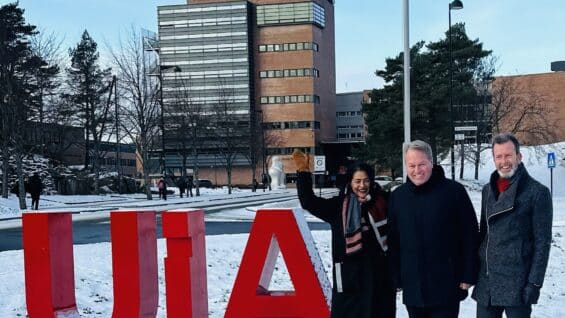Macroalgae cultivation developments in the west coast of Estonia
In the west coast of Estonia, the blue bioeconomy was in the year of 2023 more in the focus than ever. A successful year started with the blue bioeconomy conference in February in the capital of Saaremaa Kuressaare, which brought together leading experts in the field and summoned a high level of expertise and knowledge for the development of the sector.
There the existing situation was mapped, and the event showed that there is a huge potential for fostering the growth of the sector in the combination of mixing old maritime traditional activities with innovative solutions with the focus on economic, social and environmental sustainability. Gathering macroalgae Furcellaria from the beaches and trawling it from the coastal waters of Saaremaa has fostered local entrepreneurship for decades.
However, new possibilities emerge with the cultivation of macroalgae in different locations in the west coast of Estonia. Scientists from Estonian Maritime Academy have successfully tested the cultivation possibilities and new projects are focusing on cultivation on a larger scale. This initiates the collaboration between academia, local entrepreneurs and government with the focus on new products and business ideas that can be an important foundation for regional development.
The year 2023 also marked a moment where the BlueRev project started to provide an important input for introducing new innovative business models at the entrepreneurial level and novel ideas for wider regional development in the field of blue bioeconomy.
Experts in the field agree that macroalgae cultivation is considered an environmentally friendly activity because it takes excess nutrients from the seawater. From the entrepreneurial perspective it is a resource for nature friendly alternatives for minimising the use of products that are made of plastic and provides new input to the local food and tourism industry. From the regional perspective it can provide a new image for the region, increase local employment and attract new investments.
The benefits for fostering this kind of development in the region are significantly greater than those based on the blue economy alone. For example, it can help the tourism industry with product development and reaching new client segments. However, as bright as the future might see there are certain challenges to overcome. Product development, scaling up macroalgae cultivation and requiring necessary permits can be time consuming and starting a new business requires significant investments.
These challenges can be overcome with productive collaboration between scientists, entrepreneurs, local community and public sector. This kind of collaboration can be established as was shown by the conference held in February. It is important to highlight that other regions besides Saaremaa in the West-Estonia are also showing interest in macroalgae cultivation. For example, the small island of Ruhnu which can be considered one of the most remote places in Estonia has shown great interest in macroalgae cultivation that can be an important driver for the local food industry and foster regional development to a new height. Considering aforementioned aspects, the year 2024 can bring many new and interesting developments to the field of blue bioeconomy in Estonia.




